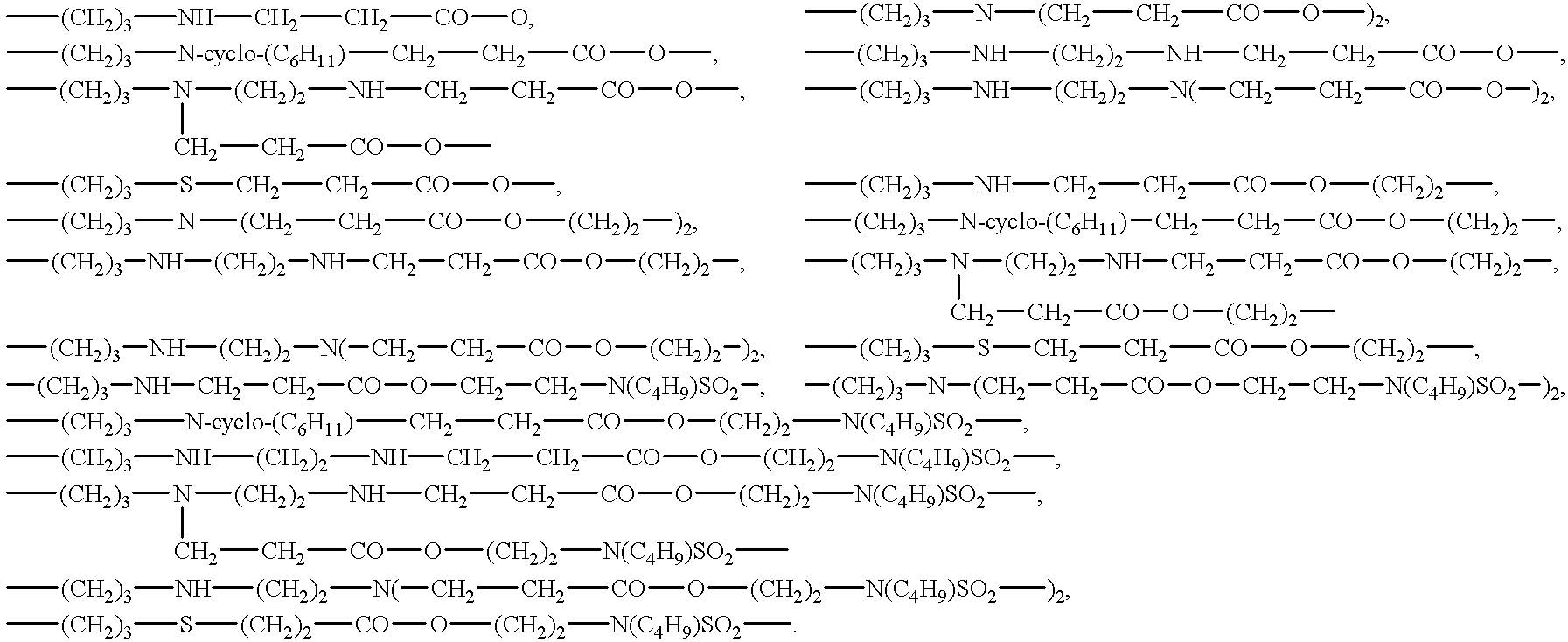Surface-active organosilicon compounds
a technology of organic compounds and surface-active elements, which is applied in the preparation of sugar derivatives, group 4/14 element organic compounds, chemical/physical processes, etc., can solve the problems of oxidized sugars (sugar lactones), the inability to remove transition metal catalysts from the product formed, and the inability to enable transition metal catalysts
- Summary
- Abstract
- Description
- Claims
- Application Information
AI Technical Summary
Benefits of technology
Problems solved by technology
Method used
Image
Examples
example 2
7.30 g (26.25 mmol) of glucosyloxyethyl acrylate are added to a solution of 70.0 g of .alpha.,.omega.-functionalized aminosilicone oil (AN=0.75; 26.25 mmol of primary amine) and 100 ml of 1,4-dioxane and the reaction mixture is heated at a temperature of 70.degree. C. for 4 hours. The solvent is then distilled off at a flask internal temperature of 40-50.degree. C. and a pressure of 20 mbar. Thereafter, the reaction mixture is heated thoroughly for 0.5 hours at a temperature of 40-50.degree. C. and a pressure of 20 mbar to remove the volatile constituents.
example 3
7.30 g (26.25 mmol) of glucosyloxyethyl acrylate are added to a solution of 70.0 g of .alpha.,.omega.-functionalized aminosilicone oil (AN=0.75; 26.25 mmol of primary amine) and 100 ml of n-dibutyl ether and the reaction mixture is heated at a temperature of 70.degree. C. for 4 hours. The solvent is then distilled off at a flask internal temperature of 40-50.degree. C. and a pressure of 20 mbar. Thereafter, the reaction mixture is heated thoroughly for 0.5 hours at a temperature of 40-50.degree. C. and a pressure of 20 mbar to remove the volatile constituents.
example 4
7.30 g (26.25 mmol) of glucosyloxyethyl acrylate are added to a solution of 70.0 g of .alpha.,.omega.-functionalized aminosilicone oil (AN=0.75; 26.25 mmol of primary amine) and 100 ml of tert-butyl methyl ketone and the reaction mixture is heated at a temperature of 70.degree. C. for 4 hours. The solvent is then distilled off at a flask internal temperature of 40-50.degree. C. and a pressure of 20 mbar. Thereafter, the reaction mixture is heated thoroughly for 0.5 hours at a temperature of 40-50.degree. C. and a pressure of 20 mbar to remove the volatile constituents.
PUM
| Property | Measurement | Unit |
|---|---|---|
| pressures | aaaaa | aaaaa |
| pressures | aaaaa | aaaaa |
| temperatures | aaaaa | aaaaa |
Abstract
Description
Claims
Application Information
 Login to View More
Login to View More - R&D
- Intellectual Property
- Life Sciences
- Materials
- Tech Scout
- Unparalleled Data Quality
- Higher Quality Content
- 60% Fewer Hallucinations
Browse by: Latest US Patents, China's latest patents, Technical Efficacy Thesaurus, Application Domain, Technology Topic, Popular Technical Reports.
© 2025 PatSnap. All rights reserved.Legal|Privacy policy|Modern Slavery Act Transparency Statement|Sitemap|About US| Contact US: help@patsnap.com



